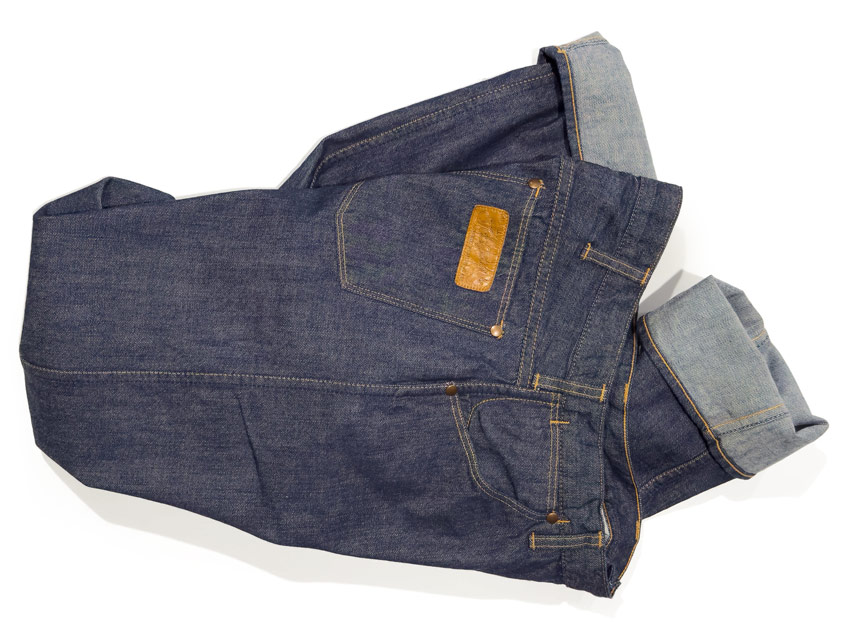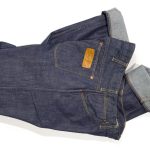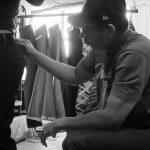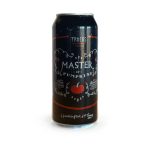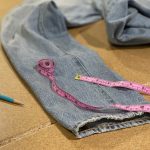TCB Jeans crafts history into every stitch, reviving iconic denim like the 1966 Levi’s 501 and the 1955 Levi’s 701 with unparalleled authenticity. It's not just about wearing jeans; it's about embodying a piece of denim's storied past, meticulously re-created...
Read More →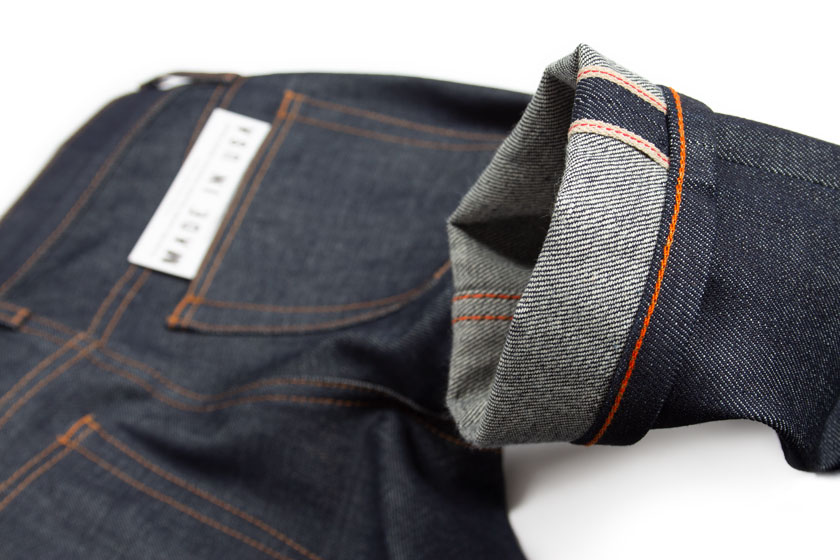
Here is everything you need to know without going into great detail about raw denim’s history or production. Raw denim fabric must first be understood in order to understand what raw jeans are.
Raw denim is simply denim fabric that has not been washed, dyed, soaked, or otherwise exposed to water.
Raw denim is simply denim that has not been washed, colored, soaked, or otherwise exposed to water after the weaving process. What makes denim “raw” has nothing to do with its color, weight, maker, dye, or the fact that it is selvedge or not.
Raw denim is also called dry or hard denim, but it shouldn’t be confused with selvedge denim, which it often is. In the image below, you can see examples of the two different types of raw denim fabric used to make denim clothing. The most common type of denim among denim enthusiasts is selvedge, which refers to the weaving process of the fabric. It has clean-self finished edges or “self-edge” which are used in finished garments by cutting selected pattern parts to the edge of the fabric. Wide goods or non-selvedge denim (pictured in the foreground) is woven with frayed edges which are discarded after cutting.
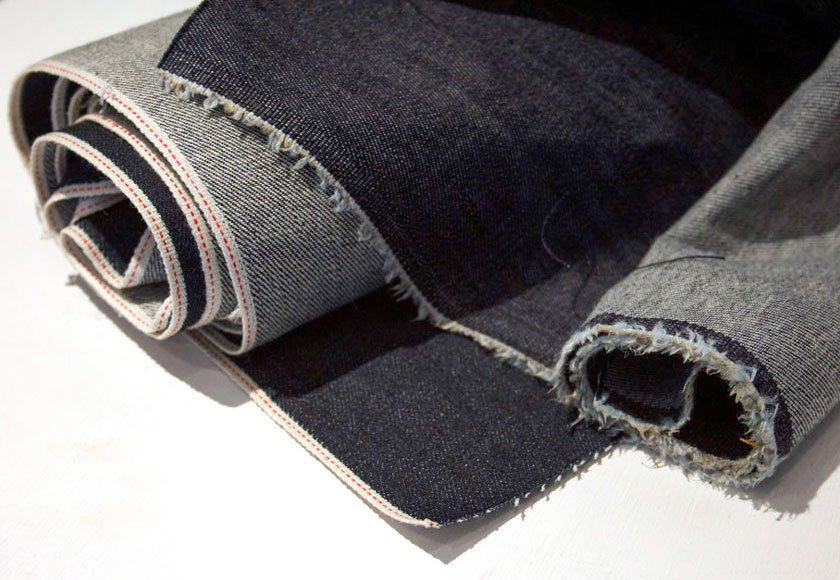
Is selvedge better quality denim?
Don’t be fooled by the name selvedge into believing it’s better denim. Quality standards, like other items, will vary depending on the provider. Both selvedge and non-selvedge denims are manufactured in varying grades. Frequently, mass producers of low-cost jeans use suppliers who are not known for producing high-quality denim. Do your homework since some mass-market brands will leverage the cache of mills recognized for creating premium denim to make cheap denim that looks the part.
Why is selvedge denim more expensive?
For fabric mills, weaving selvedge denim is more expensive. For brands, the cost of manufacturing garments produced with selvedge denim is higher. As a result, selvedge denim products typically sell at higher costs within a brand’s style assortment.
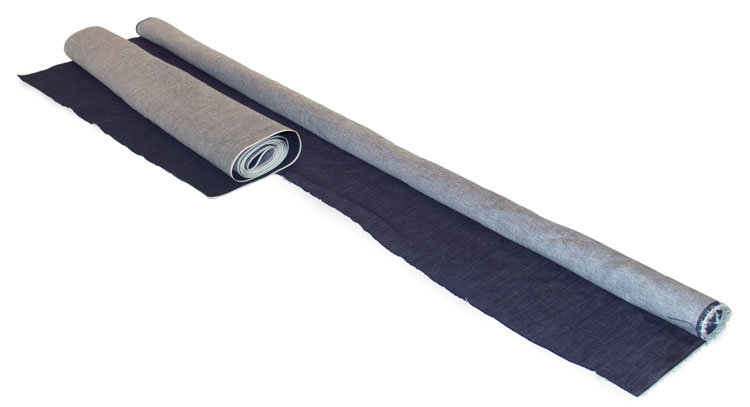
Within a brand’s style range, selvedge denim jeans are more likely to be more expensive than non-selvedge models: To begin, unlike non-selvedge denim, which can range from 57″ to 64″ wide, selvedge denim is narrower, ranging from 28″ to 34″ in width. This means that a pair of selvedge jeans may require roughly double the amount of fabric as a regular pair of jeans. The pricing of the fabric is the second factor to consider. Selvedge costs a few dollars extra per yard (depending on the supplier) because it is typically woven on older, slower looms that create fabric with a high rate of flaws, whereas modern looms make wider (non-selvedge) denim with fewer faults at faster speeds.
The images below show “Markers” for jeans. Markers are patterns for each size range that are printed on paper and used by the cutter to trace the cut on the fabric. The pattern pieces on the Markers are arranged to minimize fabric waste. Selvedge Markers are shown in the top image, and non-selvedge Markers are shown in the bottom image. This example shows two pairs of jeans cut on the narrower selvedge denim would require nearly 6 yards of fabric, while two of the same sizes cut on the wider non-selvedge would use about 2 1/2 yards of fabric.

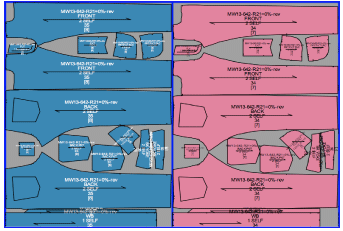
You might be interested in
TCB Jeans crafts history into every stitch, reviving iconic denim like the 1966 Levi’s 501 and the 1955 Levi’s 701
Nick English from Stridewise visited our studio at 67 West Street to expertly tailor his jeans at the waist. Watch
In a sea of seasonal brews, Master of Pumpkins Ale by Tröegs Independent Brewing rises to the top. Our review
How to measure the inseam of twisted-leg jeans is made clear in our video lesson. Learn how to handle this
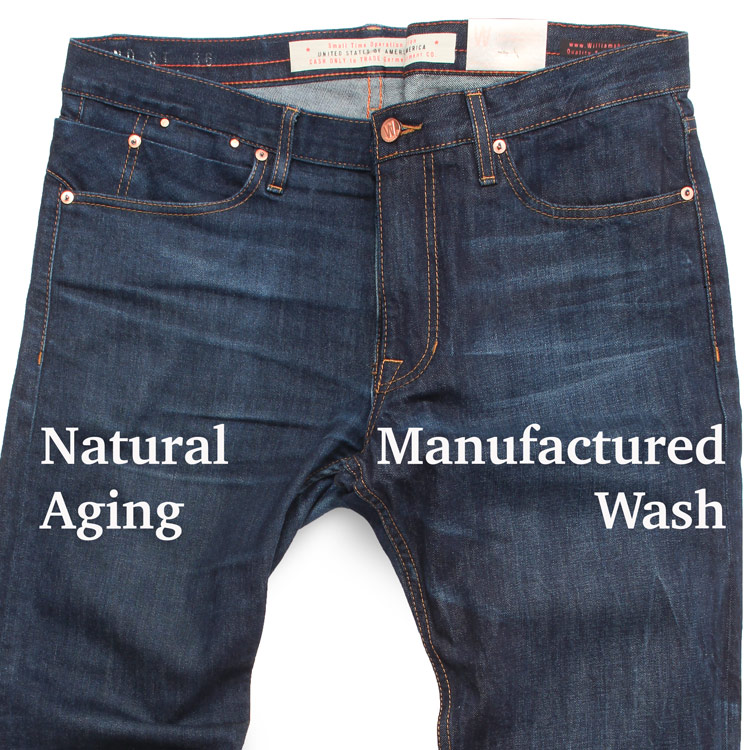
Mastering the rules that go along with owning a pair of raw denim jeans can be a chore to some. This is one reason some opt for pre-washed jeans. However, for raw denim aficionados, the rewards of naturally aging from a pair of raw jeans out weights the alternative.
Know the differences between naturally aged raw denim jeans and factory washed
People new to raw denim and those who love jeans, but only know them in the pre-washed form, often can’t tell the difference between a naturally aged pair of raw denim jeans and one that is purchased pre-washed. However, if you fall into this category don’t feel bad. You may be surprised to learn many of the people earning salaries as designers, editors, and denim buyers at some of the largest department stores, publications, and brands making the decisions on what jeans are sold, seen, and made, don’t know the difference either. I can’t tell you how many times one of the aforementioned asked about a pair of my raw denim jeans (new/unworn) and referred to them as a dark wash.
Below, I placed two jeans side by side to compare naturally aged jean which started as a pair of raw jeans and premium washed jean, which was designed to replicate dark-aged jean and then I detailed the attributes. Both are Williamsburg jeans. Although we take pride in trying to recreate really authentic-looking aged jeans, there is really just no substitute for the real thing. However, if you seek a worn, broken-in jeans and don’t have the time or patience to weather a pair of raw, please opt for washed jeans with authentic-looking attributes and try to avoid washed jeans that were meant to look aged but look more like jeans decorated with harsh white spots and lines drawn on them.
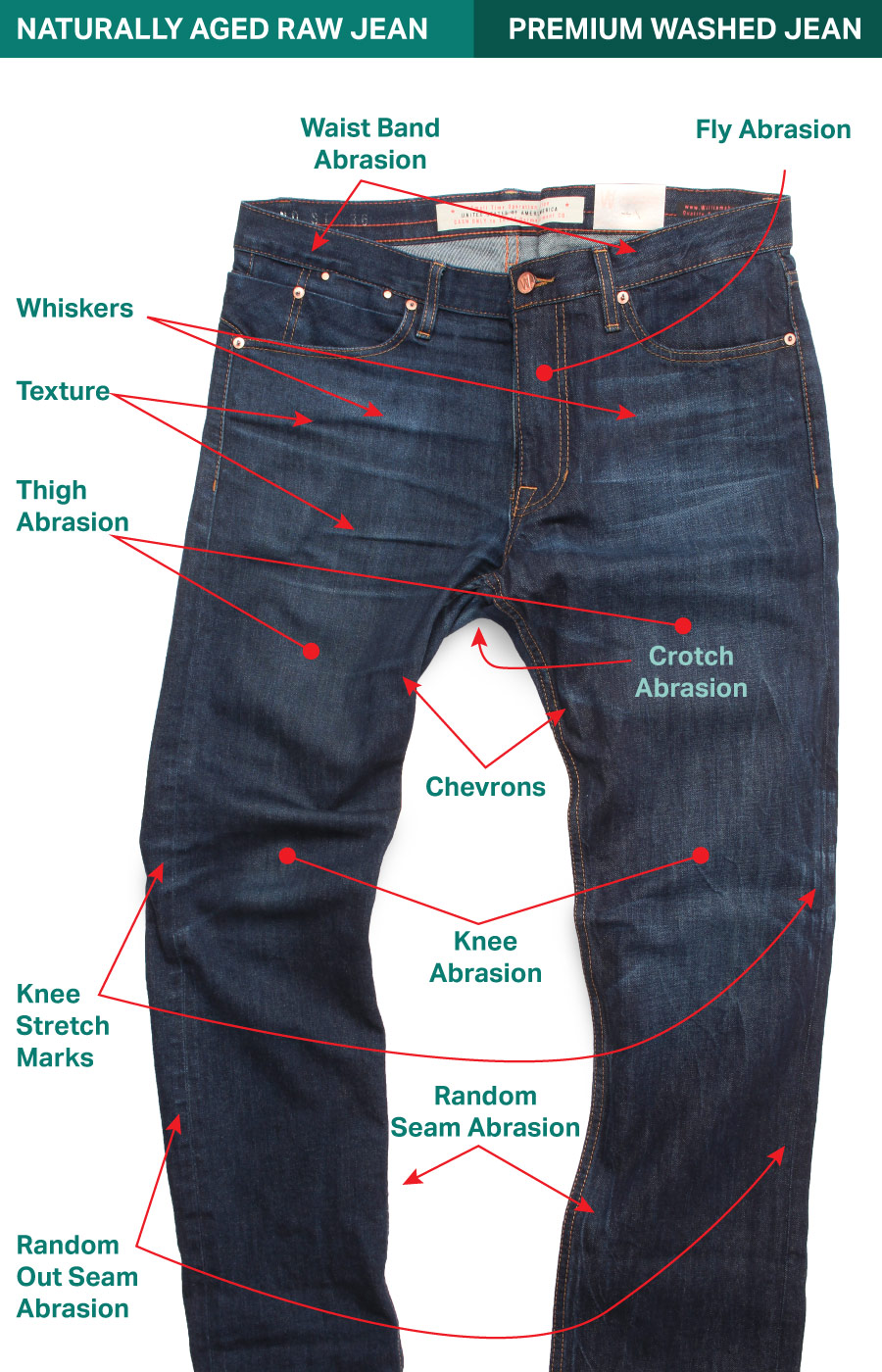
WHISKERS
Named for obvious reasons, whiskers are the most difficult to imitate and can be the defining detail that makes a wash look artificial or authentic. Real whiskers develop texture over time as the jeans tuck and fold in a repeated manner, with the highest point receiving more abrasion, removing more indigo, and the lower less fiction, which stays darker. High stress at the hip area causes the fabric to bend horizontally. In the early years of whisker reproduction, workers used clamps and tacks with resin to harden the texture in place, in an attempt to give jeans a realistic look. The drawback of making textured denim with resin is that it weakens the yarns. Too much resin on jeans may look good, but the fabric becomes brittle and easily tears. In about 2003, as I was seeking to create more authentic-looking whiskers, I created a new way to add texture and naturally shaped wrinkles to jeans, which is now used at factories all over the world. You can read more about that on the Maurice Malone website.
THIGH, KNEE, AND SEAT ABRASION
The second most important parts of a denim wash are the thigh and seat abrasion. In general, these areas usually take the most beating, along with the knees. In hand sanding, the factory worker usually starts out making the whiskers followed by the thigh, then seat sanding. Lower-quality washes often use sandblasting for speed. This is why with many low-priced and mass-market jeans, the aging at the thigh is bright white or looks like big spots. Sandblasting, although faster is harder to control in the manufacturing process. It also lays down an even amount of abrasion which doesn’t look natural. These areas are finished off with potassium to quickly fade sanded areas. Again, in lower price jeans, the chemical is sprayed on, while some higher-priced manufacturing sometimes applies the potassium by brush for a more natural uneven effect.
CHEVRONS
Chevrons are stretch marks on the inner thighs. They are usually more intense higher in the crotch and fade out closer toward the knees.
KNEE STRETCH MARKS
One of the characteristics routinely avoided in premium washes, but always seen on naturally aged jeans is stretch marks created by the stress of bending the knees. These marks usually extend over the outer seams and fade into the wrinkles at the rear side of the knees.
REAR KNEE LINES
Not pictured, but sometimes added to washed jeans are the honeycomb-like texture that forms at the rear side of the knees from walking and the sitting position. Wash factories tend to overdo effects more often than not and this feature is not so easy to replicate, so most of the time, the rear knees are either avoided or badly done. The worst example of this is the look of lines drawn at the rear sides of the knees, usually with the placement low on the calf.
WAISTBAND ABRASION
Most often, this wearing away is seen on men’s jeans from the friction caused by wearing a belt.
FLY ABRASION
Fly abrasion can take many forms, depending if the jeans have a button or zipper fly. It also depends on how loose or tight the fit of the jeans is. When you see whiskers across the fly, it is affected by the stress from the hips and this usually occurs with button fly.
You might be interested in
TCB Jeans crafts history into every stitch, reviving iconic denim like the 1966 Levi’s 501 and the 1955 Levi’s 701
Nick English from Stridewise visited our studio at 67 West Street to expertly tailor his jeans at the waist. Watch
In a sea of seasonal brews, Master of Pumpkins Ale by Tröegs Independent Brewing rises to the top. Our review
How to measure the inseam of twisted-leg jeans is made clear in our video lesson. Learn how to handle this
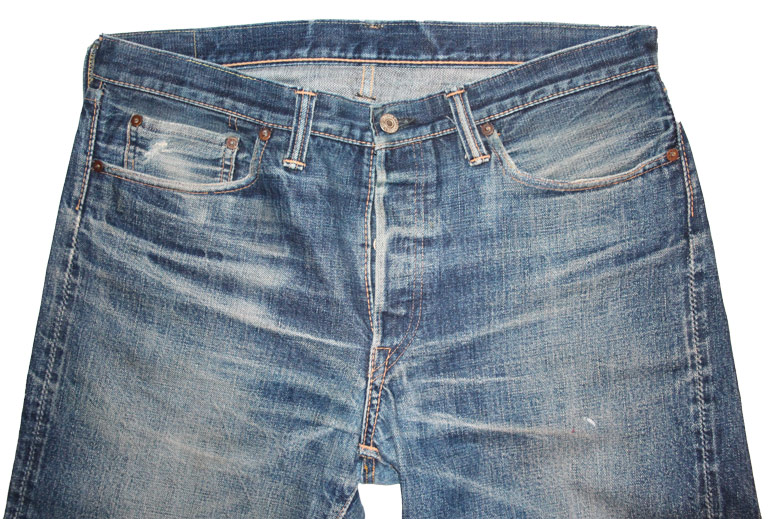
Denim enthusiasts know the best whiskers are made by starting with a pair of dark raw denim jeans and just wearing the hell out of them. An example can be seen in the image below of a 1-year-old 15-oz pair of Williamsburg jeans. On the other hand, the average consumer may be asking, “what are whiskers on jeans?” Because they only know the jeans they buy in stores come with a worn-in look and can’t tell what looks natural and what looks manufactured.

If you don’t have the patience to break-in a pair of raw jeans or can’t deal with the rules of wearing them – choosing rather buy pre-washed ones. You should at minimum be educated on what looks real or good in terms of washes. This is the first article in a new series where we break down many of the effects seen in naturally aged denim jeans. We will explain how the effects are created to make prefabricated washes look naturally aged.
What are jean whiskers?
Whiskers, also called mustaches, hige, crease lines, etc., can be seen on the jeans below, which formed naturally from the state of raw denim jeans. Lines from repeated stretching and pulling motion develop at the front hip area. Crease lines extend out from the crotch and across the out-seams of the hips. As raw jeans age. Abrasion on the high points of the surface fades and becomes brighter than the surrounding areas as indigo or dye rubs off.
How to put whiskers on jeans
On pre-washed or commercially processed jeans, fabricating whiskers is one of the most copied and difficult effects to achieve. They are artificially created by hand sanding the jeans before they are washed and still in “raw denim” form. On lower-priced jeans, the effect usually looks fake, like drawn white lines. On jeans that garner higher price tags, sometimes known as premium denim, more time and effort is spent to make the whiskers look as real as possible by fading them in and out, mimicking high to low points.
You might be interested in
TCB Jeans crafts history into every stitch, reviving iconic denim like the 1966 Levi’s 501 and the 1955 Levi’s 701
Nick English from Stridewise visited our studio at 67 West Street to expertly tailor his jeans at the waist. Watch
In a sea of seasonal brews, Master of Pumpkins Ale by Tröegs Independent Brewing rises to the top. Our review
How to measure the inseam of twisted-leg jeans is made clear in our video lesson. Learn how to handle this

